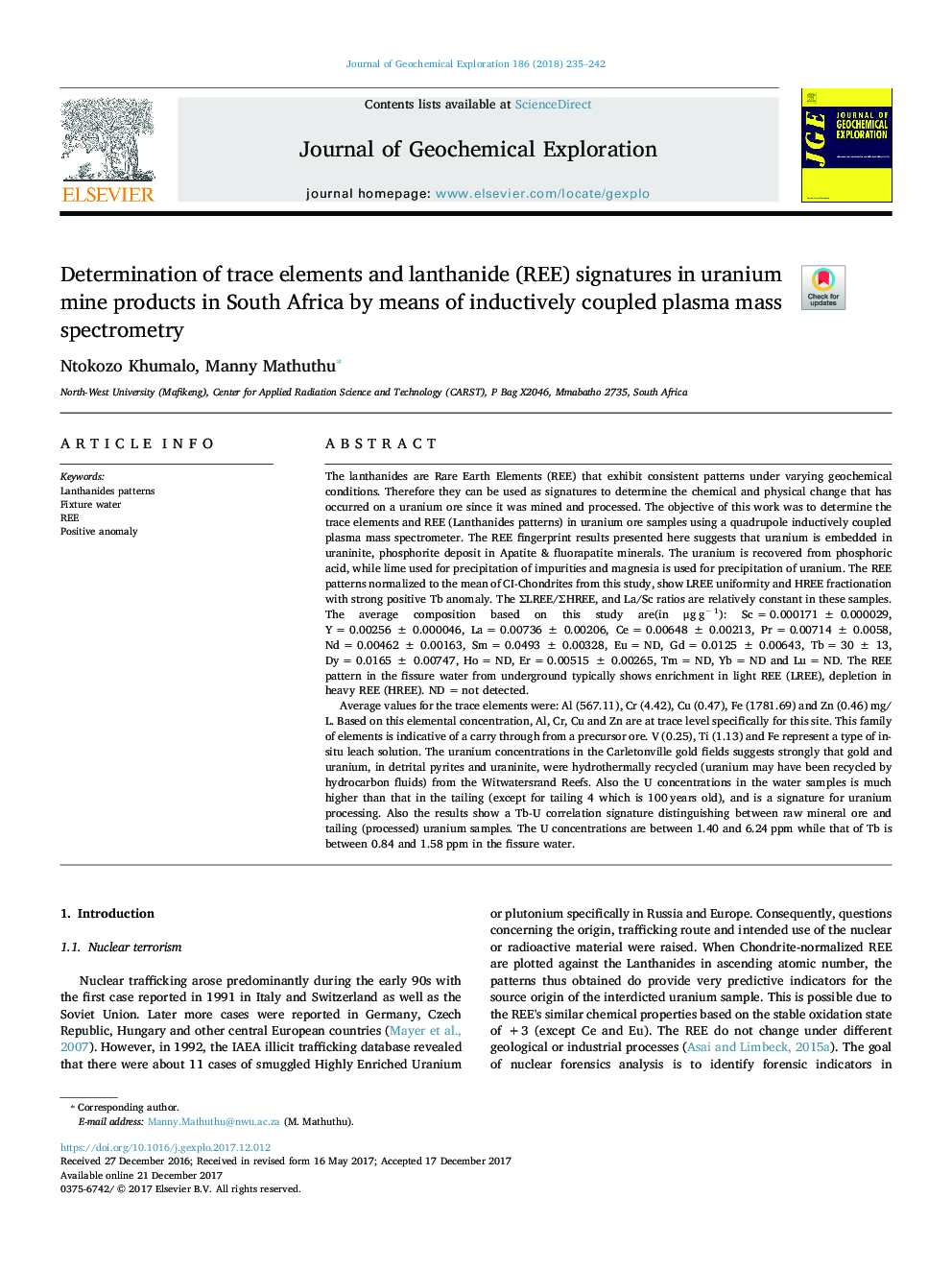| Article ID | Journal | Published Year | Pages | File Type |
|---|---|---|---|---|
| 8866095 | Journal of Geochemical Exploration | 2018 | 8 Pages |
Abstract
Average values for the trace elements were: Al (567.11), Cr (4.42), Cu (0.47), Fe (1781.69) and Zn (0.46) mg/L. Based on this elemental concentration, Al, Cr, Cu and Zn are at trace level specifically for this site. This family of elements is indicative of a carry through from a precursor ore. V (0.25), Ti (1.13) and Fe represent a type of in-situ leach solution. The uranium concentrations in the Carletonville gold fields suggests strongly that gold and uranium, in detrital pyrites and uraninite, were hydrothermally recycled (uranium may have been recycled by hydrocarbon fluids) from the Witwatersrand Reefs. Also the U concentrations in the water samples is much higher than that in the tailing (except for tailing 4 which is 100Â years old), and is a signature for uranium processing. Also the results show a Tb-U correlation signature distinguishing between raw mineral ore and tailing (processed) uranium samples. The U concentrations are between 1.40 and 6.24Â ppm while that of Tb is between 0.84 and 1.58Â ppm in the fissure water.
Keywords
Related Topics
Physical Sciences and Engineering
Earth and Planetary Sciences
Economic Geology
Authors
Ntokozo Khumalo, Manny Mathuthu,
